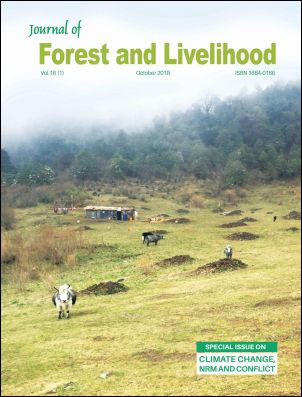Human-Elephant Conflict and Mitigation Measures in Jhapa District, Nepal
DOI:
https://doi.org/10.3126/jfl.v16i1.22885Keywords:
Crop and property damage, habitat, human casualty human, elephant conflictAbstract
Asian elephants are the largest terrestrial animals that are highly threatened due to habitat loss and fragmentation. Human - Elephant Conflict (HEC) is a complex interaction between human and elephant, which represents detrimental impacts for both. The aim of this study was to explore HEC in terms of human casualties and injuries and crop and property damage in all the wards of Jalthal Village Development Committee of Jhapa district, Nepal. It also aimed at identifying the commonly practiced mitigation measures by the local people in the study area. For this study, 179 households were randomly selected for questionnaire surveys followed by 20 key informant interviews and 5 focus group discussions. Our study shows that the settlements located nearby the Jalthal forest had higher risks of elephant attacks. The crop damage was the most frequent damage in terms of HEC in the study area. Among the crops, paddy was the most damaged crop. Property damage was the second problem faced by the local people. However, there were no significant differences in crop and properties damaged by elephants among different socio-economic classes. The most commonly used mitigation measures adopted in the study area were shouting and use of fire but people were not satisfied with the present conflict management strategies due to their ineffectiveness. This study implies that the presence of resident wild elephant has increased the vulnerability of local people living around the Jalthal forest. Thus, detail study on the habitat assessment and seasonal movement patterns of resident herds in and around Jalthal forest area is required for proper planning and implementing suitable mitigation measures and habitat management activities.
Downloads
Downloads
Published
How to Cite
Issue
Section
License
CC-BY-NC: This license allows reusers to distribute, remix, adapt, and build upon the material in any medium or format for noncommercial purposes only, and only so long as attribution is given to the creator.





